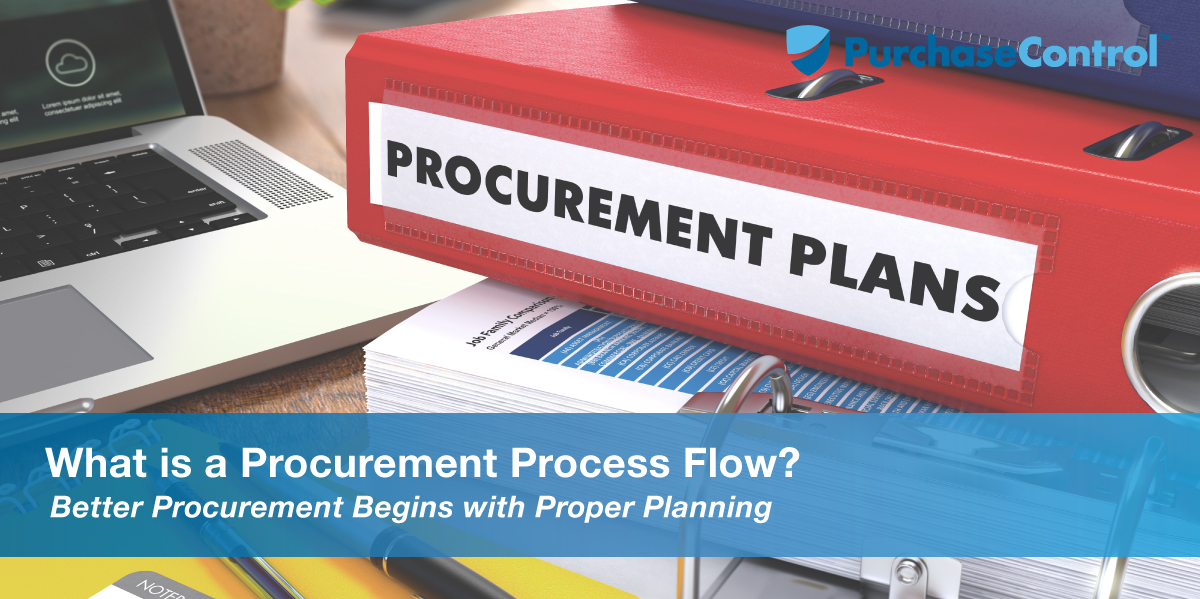Prior to the rise of modern technology, businesses big and small have struggled to get a solid grip on the procurement process. Without the right tools, procurement can be an overly complicated process fraught with potential for errors, as well as an enormous drain on your purchasing department’s time and resources. Thankfully, the advent of digital, rather than paper-driven, procurement means you can obtain goods and services with much greater efficiency, accuracy, and speed.
Taking the time to establish parameters and policies for procurement lets you define clear purchasing and approval hierarchies, foster effective communication, and minimize errors, complications, and wasted time.
Defining an Effective Procurement Process
Every company and organization can benefit from an organized approach to purchasing goods and services. At its simplest, the procurement process (also known as a procurement process flow or procurement management process) is the manner in which your purchasing department manages this task.
To be effective, a good procurement process flow must:
- Define the goods and services to be obtained.
- Clearly identify all parties involved in obtaining these items.
- Assign roles for requesting, approving, processing, and payment.
- Provide a well-defined, step-by-step instructions for each party regarding the actions necessary to advance the process as a whole.
- Define and clarify contingencies to reduce and eliminate potential bottlenecks in the system.
- Support transparent communication and provide centralized records management for accounting, marketing, and other purposes.
Archaic procurement tools—stacks of unwieldy printouts, forms scribbled in blurry pencil, etc.—made this process something of a living nightmare. But integrating your procurement process with high-performance eProcurement software makes it much easier to build best procurement practices into your entire organization.
“Today’s fast-paced and fully connected business world moves too quickly for pencil and paper. Automating your business purchases and building a balanced, collaborative procurement process can help you turn a simple flowchart into a flowing river of efficiency and value.”
Charting a Successful Process Flow
Every company has its own specific approach and best practices, but all effective procurement processes follow the same basic workflow, which can be visualized using a procurement process flowchart:
- A department or individual requests goods or services by submitting a purchase requisition. Traditionally, this request might be made through the phone, via email, or even hand-written via fax or post. With eProcurement software, the requester can peruse the catalog of items available from pre-approved vendors, or, if authorized to do so, submit a request to purchase from a new vendor.
- The request is sent to the manager, the procurement department, or other authorized party for approval. In the past, this stage provided the first potential roadblock in the procurement cycle, as managing approvals from a disparate and decentralized collection of sources meant some smaller requests might be put on the back burner or even slip through the cracks altogether.
With a modern software solution, all requests are sent to the proper parties automatically, with crucial contextual information that can help management decide how best to leverage the terms established with preferred vendors for the best value on each purchase. The approving party can also reject a request, either denying the request outright or requesting clarification, missing information, etc. - The approved request is used to create a purchase order. Generally, the buyer is responsible for sending a budget request to the accounting department so they can verify funds are available to cover the purchase. This process is greatly simplified with clear roles, buying limits, and authorization hierarchies built into a fully integrated eProcurement suite.
- Once they’ve received approval and a purchase order, the buyer sends the purchase order to the pre-approved preferred supplier. If they’re purchasing goods and services the company hasn’t bought before, or needs to find a new supplier, they can send requests for quotation (RFQs) to vendors, who can then be evaluated and, once approved, sent the purchase order. In the past, this point in the process was another potential bottleneck, since a buyer might not know preferred suppliers for a given product or service, or submit multiple requests to an established supplier. A centralized, fully transparent procurement process flow dodges these potential headaches by eliminating confusion, preventing duplicate quotation requests, and automatically providing essential information to the parties who need it.
- The proper vendor is selected and the order sent.
- The goods and services are received. For physical goods, the packing slip is checked against the purchase order to ensure everything ordered was received, and if not, what items may need to be reordered, received later, or refunded.
- The invoice is sent to the accounting department, which cross-checks the invoice against the packing slip (for physical goods) and purchase order to verify proper payment. Software leveraging automatic two- or three-way matching makes for easier invoice approval, and ensures payments are prompt and accurate.
- Once payment has been processed, the buyer records the completed transaction for the company’s financial records. With eProcurement software, the transaction is recorded automatically and available for review at any time. Having this information in a centralized database makes reporting, forecasting, and audit trails much simpler to manage.
Benefits of a Digital Procurement Process
Today’s fast-paced and fully connected business world moves too quickly for pencil and paper. Automating your business purchases and building a balanced, collaborative procurement process can help you turn a simple flowchart into a flowing river of efficiency and value.
Digital procurement process management gives you total control over all stages of the purchasing process; all information is corralled, organized, and maintained in a single, centralized application, and key stakeholders can make informed decisions quickly.
Consider the true value your company gets from automating its procurement process:
- The procurement lifecycle is streamlined and shortened at all stages
- Less paperwork means fewer wasted hours, fewer errors, greater productivity, and a smaller ecological footprint
- Centralized, transparent management improves communication, accuracy, and consistency.
- Policies can be established and enforced without fear of maverick spending, cash flow challenges, or costly contract compliance issues.
- Every transaction is available for auditing purposes and to provide optimal forecasting and reporting.
Go with the Flow for Procurement Performance
Don’t linger in the dustbin of history with the buggy whips and butter churns. Save time and frustration, and get more value from every stage of the procurement cycle, from vendor payments to contract negotiation to building the best possible business practices for your organization.
Automation takes the pain out of procurement. A well-designed and effectively implemented procurement process flow is the first step to procurement that addresses your specific business needs and produces real value for your company.
How Can PurchaseControl Help Make Your Procurement Workflow Smarter, Not Harder?
Find Out How








